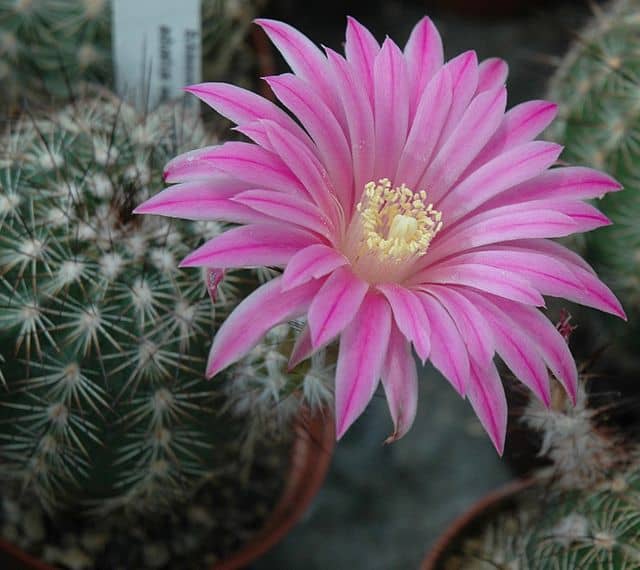Echinocereus adustus v roemerianus seeds
Echinocereus adustus v roemerianus seeds
Echinocereus adustus var. roemerianus – A Compact Cactus with Deep Color and Hardy Roots
Echinocereus adustus var. roemerianus, commonly known as Roemer’s Hedgehog Cactus, is a captivating and resilient cactus variety native to the rocky outcrops and scrublands of southwestern Texas and northeastern Mexico. This subspecies of Echinocereus adustus is particularly valued by collectors for its richly colored spines, compact form, and adaptability to both desert and temperate conditions.
Like many in the Echinocereus genus, adustus var. roemerianus produces stems that are cylindrical to slightly clumping, typically growing 4–8 inches tall and 2–3 inches wide. The stems are deeply ribbed and densely covered with dark brown to purplish-black spines, giving the plant a striking silhouette. This dark spination is one of its most defining traits, making it stand out against paler rocks and sandy soils in native or cultivated landscapes.
Each stem may contain up to 9–12 ribs, lined with areoles from which clusters of straight or slightly curved spines emerge. The overall effect is a cactus with a rugged, armored appearance that adds visual interest to rock gardens, desert containers, and dryland beds. While the spines serve to protect the plant from herbivores and harsh sunlight, they also enhance its sculptural appeal, especially when contrasted with lighter surrounding materials.
During late spring to early summer, Echinocereus adustus var. roemerianus puts on a colorful display with its brilliant magenta-pink flowers, each measuring around 2 to 3 inches across. These funnel-shaped blooms emerge near the stem tips and are often highlighted by lighter-colored throats or yellow stamens, which attract native pollinators such as bees and butterflies. The flowers appear in succession and may last several days, providing a vibrant burst of color in arid environments.
This cactus is known for its cold hardiness and drought resistance, making it an ideal candidate for xeriscaping, wildlife-friendly gardens, or container collections in climates with mild winters. It thrives in full sun but tolerates partial shade, especially in extremely hot, dry climates. Well-draining soil is essential—whether rocky, sandy, or cactus mix—to prevent root rot. Once established, the plant is extremely low maintenance and requires only occasional deep watering during extended dry spells.
Growing this species from seed is a rewarding endeavor for collectors and cactus growers seeking rare and regionally native species. Although germination may take a few weeks, seedlings develop steadily when provided with warmth, filtered light, and proper drainage. Over time, seed-grown plants form durable and attractive specimens with individual character and natural variation.
Why Grow Echinocereus adustus var. roemerianus?
-
Distinctive dark-colored spines for bold contrast in cactus gardens
-
Beautiful magenta flowers that attract pollinators
-
Cold hardy and heat tolerant—great for outdoor cultivation
-
Excellent for rock gardens, desertscapes, and alpine troughs
-
Compact, clumping habit perfect for containers
-
Native to the southwestern U.S., ideal for native plant enthusiasts
-
Grows easily from seed with minimal maintenance
Growing Conditions
-
Light: Full sun to partial shade
-
Soil: Gritty, fast-draining cactus mix or sandy, rocky soil
-
Water: Water sparingly; allow soil to dry completely between waterings
-
Temperature: Hardy to around 10–15°F; protect from excessive winter moisture
-
Fertilizer: Use a diluted cactus fertilizer once a month during the growing season
-
Propagation: By seed or offsets (in mature plants)
If you’re looking to add a cold-hardy, drought-resistant, and visually unique cactus to your collection or landscape, Echinocereus adustus var. roemerianus is an excellent choice. Its compact growth, rich spine coloration, and dazzling spring flowers combine durability with charm—perfect for any desert garden, rockery, or cactus enthusiast’s collection.
